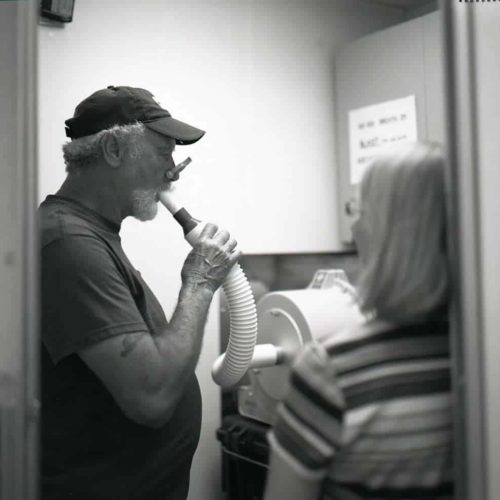Introduction
A federal enforcement blitz targeting coal mines with potentially dangerous levels of dust found a host of violations at more than a dozen sites where conditions left miners at risk for developing black lung disease.
Following the April 2010 explosion at the Upper Big Branch mine in southern West Virginia, regulators have focused on problem mines under a new special enforcement program. The most recent round of inspections, however, used new criteria to target mines likely to have problems controlling the dust that can lead to black lung.
The inspections followed a Center for Public Integrity-NPR investigation that highlighted the resurgence of black lung disease and exposed widespread misconduct by coal companies and often-lax enforcement by the federal Mine Safety and Health Administration.
In September, inspectors found more than 120 violations at 13 coal mines. Many companies failed to ventilate working areas properly and relied on broken-down equipment to suppress dust, citations allege. Two of the mines cited are owned by Robert Murray, who has lent strong support to presidential candidate Mitt Romney. A representative for Murray Energy Corp. could not be reached for comment Wednesday.
The inspections focused heavily on mines in Appalachia, where the increase in black lung has been most dramatic. Overall, rates of the disease have declined since 1969, when, in a landmark law, Congress forced companies to control dust levels.
In the late 1990s, however, the downward trend in disease rates reversed, and government researchers are documenting with alarm the return of black lung, which was supposed to have been eradicated years ago. Even more disturbing: Rates of the most severe form of the disease have tripled since the 1980s.
Carol Raulston, a spokesperson for the National Mining Association, on Wednesday reiterated the industry’s position that the disease’s resurgence is a regional phenomenon of central Appalachia caused by increased exposure to silica – a mineral found in rock that is damaging to miners’ lungs – rather than coal dust. “If they’re just focusing on coal dust [in the special inspections],” she said, “they’re missing the implications of the latest health data.”
The promise of the 1969 law has been undermined by rampant cheating on dust samples and exploitation of loopholes by coal companies, the Center-NPR investigation found. A Center analysis of MSHA databases found that miners have been breathing too much dust for years, but the agency has issued relatively few violations and routinely allowed companies extra time to fix problems.
In 2010, MSHA proposed a rule that would lower miners’ exposure to coal mine dust and close some loopholes. Republicans in Congress have sought to block issuance of the rule, mandating a study of whether it was necessary by the Government Accountability Office. The study, released this August, supported MSHA’s proposal, but the rule remains in limbo.


Join the conversation
Show Comments
I’ve been using Aircraft brand stripper for 20 years. It is the most effective and reliable product in my body shop for its purpose. I tried it the other day without this ingredient. It is the most useless stinky horrible stuff I’ve ever seen. I don’t know what this company is going to do now. They are definitely going to go bankrupt. I suppose it’s for the best , but what a bummer. Instead of spending 30 minutes stripping the old paint off of a hood, I spent three hours sanding it off and using tons of electricity and sandpaper.… Read more »